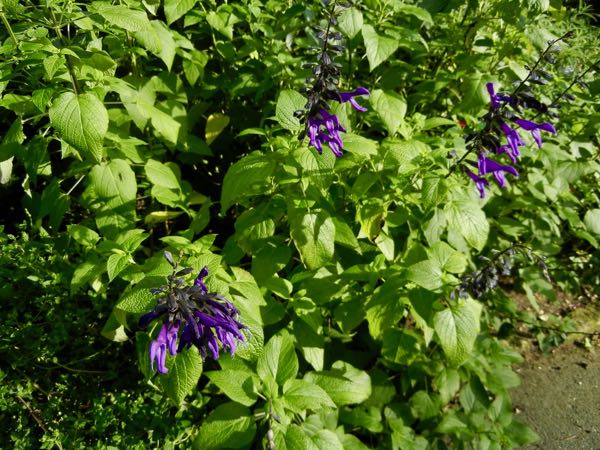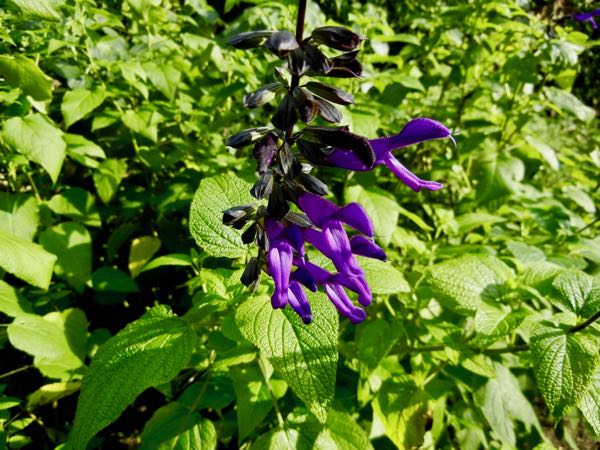Salvia farinacea: Embrace the Beauty of Mealy Sage
Salvia farinacea, a captivating herbaceous perennial, belongs to the esteemed Lamiaceae family. With its striking violet-blue flowers and square stems, this remarkable plant adds a touch of elegance to any garden or landscape. Native to Mexico and parts of the United States, Salvia farinacea is also known by the charming names Mealy Sage and Mealycup Sage. Let’s explore the fascinating details of this plant and discover how to cultivate it successfully.
Etymology and Historical Significance: The name Salvia is derived from the Latin word meaning “to heal,” reflecting the historical medicinal uses of various species within the Salvia genus. Renowned English botanist George Bentham (1800-1884) described Salvia farinacea in his notable work “Labiatarum Genera et Species” in 1833, acknowledging its botanical significance and beauty.
Salvia farinacea is a shrubby, clump-forming plant that typically grows to a height of 90cm or 3ft. Its greyish-green, ovate-lanceolate foliage creates an appealing contrast against the vibrant violet-blue flowers, which are two-lipped and grow in terminal racemes. The flowering season of Salvia farinacea extends from summer to autumn, delighting both gardeners and pollinators alike.

How to grow Salvia farinacea:
To ensure the successful cultivation of Salvia farinacea, follow these guidelines:
Sunlight and Partial Shade: Choose a location that provides ample sunlight or partial shade, as Salvia farinacea thrives in these conditions.
Soil Requirements: Plant Salvia farinacea in average, moist, and well-drained soil. This will provide the necessary foundation for its growth and development.
Propagation Methods: Salvia farinacea can be propagated from seeds or through cuttings taken in autumn. These techniques offer effective means to expand your Salvia collection or share the beauty of this plant with fellow gardeners.
Disease and Pest Management: While Salvia farinacea is generally disease-free, it is important to watch out for powdery mildew, a common fungal infection that may affect its foliage. Regular monitoring and appropriate preventive measures will help maintain the plant’s health and beauty. Additionally, the vibrant flowers of Salvia farinacea attract butterflies, enhancing the overall charm of your garden.
Varieties and Synonyms: Salvia farinacea boasts several noteworthy synonyms, including Salvia earlei, Salvia linearis, and Salvia virgata. Additionally, there are various cultivars available to suit different preferences, such as Salvia farinacea ‘Blue Bedder,’ Salvia farinacea ‘Strata,’ Salvia farinacea ‘Victoria,’ Salvia Indigo Spires, and Salvia Mystic Spires Blue. These cultivars offer unique characteristics, allowing you to create a diverse and captivating Salvia display.
With its mesmerizing violet-blue flowers, easy cultivation, and resistance to pests and diseases, Salvia farinacea is a delightful addition to any garden or landscape. Embrace the beauty and allure of Mealy Sage as it enchants both you and the visiting butterflies, creating a haven of tranquility and natural splendor.




